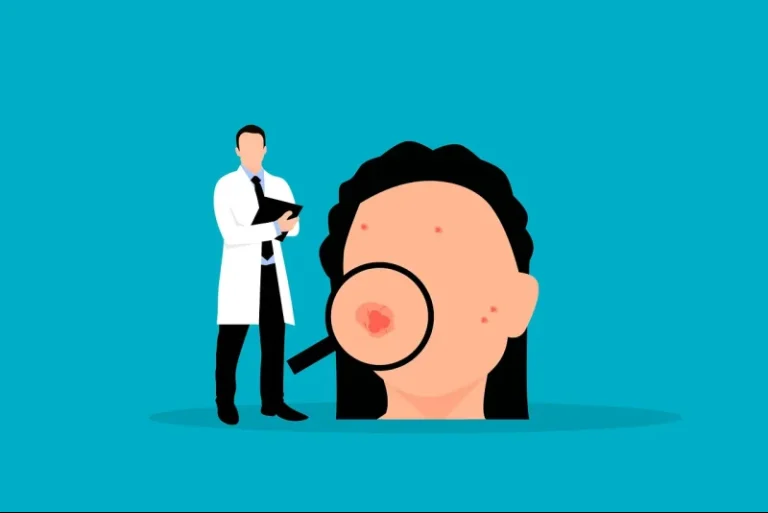Are you suffering from hives? Do you have any idea why you might be having these red bumps on your skin? There are many triggers for hives, but can also be a symptom of an autoimmune disease.
Hives are red, raised bumps that appear anywhere on the skin. They’re usually harmless, but they can be uncomfortable.
There are many reasons why someone might develop hives, including allergies, food intolerances, infections, medications, and even stress. In this article, we’ll look at not the most common causes of hives but the underlying Autoimmune Diseases that can cause Hives.
Table of Contents
1. Dysoptic Anemia
The most common cause of hives is dysoptic anemia (also known as idiopathic urticaria). Dysoptic anemia causes hives due to an allergic reaction. This type of allergy is called contact dermatitis. Contact dermatitis occurs when the body reacts to a substance that comes in contact with the skin. In this case, the substance is pollen. Pollen is found in plants, including trees, grasses, weeds, and flowers.
2. Dermatitis Herpetiformis
Dermatitis herpetiformis (DH) is a rare skin disorder characterized by intensely pruritic papules and vesicles. DH is often confused with eczema because they share similar symptoms, but DH does not respond to antihistamines.
3. Eosinophilic Esophagitis
The most common cause of hives is Eosinophilic Esopahgus (EE). EE is characterized by symptoms of food allergies, asthma, and eczema. In fact, many patients with EE may not realize they have this condition until they develop symptoms of food allergy.
4. Dermatomyositis
The most common cause of hives is dermatomyositis, a rare autoimmune disease that causes inflammation of the skin and muscles. Dermatomyositis usually occurs in adults over 40 years old. Symptoms include muscle weakness, joint pain, fever, and fatigue.
5. Hidradenitis Suppurativa
Hidradenitis suppurativa (HS) is a chronic inflammatory skin disorder that causes painful nodules and cysts to form on the axillae, groin, buttocks, perineum, and breasts. HS is often misdiagnosed as acne because it shares many symptoms with this common problem.
6. Hypothyroidism
Hypothyroidism is a common cause of hives. Hypothyroidism occurs when the thyroid gland doesn’t produce enough hormones. This causes the body to not be able to use energy properly. Symptoms include fatigue, weight gain, depression, constipation, hair loss, dry skin, cold intolerance, muscle weakness, and difficulty sleeping.
7. Keratoglobus
The most common cause of hives is keratoglobus. Keratoglobus is a rare genetic disorder that causes corneal swelling and inflammation. This leads to redness, itching, burning, and sometimes blisters.
8. Idiopathic Thrombocytopenic Purpura
Idiopathic Thrombocytopenic Purpura (ITP) is one of the most common autoimmune diseases that cause hives.
Patients usually experience a sudden onset of painful skin lesions called petechiae, followed by bruising and bleeding.
9. Multiple Sclerosis
The most common cause of hives is multiple sclerosis (MS). MS is an autoimmune disease that causes inflammation throughout the body. In some cases, people who have MS may experience hives.
Some people who have hives may develop eczema, a type of rash that looks similar to hives.
10. Polymyositis
Polymyositis is a rare autoimmune disease that causes inflammation of the muscles. This inflammation leads to muscle weakness and pain. In some cases, polymyositis can lead to difficulty breathing and swallowing.
The most common symptoms of polymyositis include muscle aches, stiffness, fatigue, and trouble sleeping. Other symptoms may include fever, weight loss, and skin rashes.
10. Neuromyelitis Optica
Neuromyelitis opticas (NMO) is an autoimmune disorder that causes inflammation of the brain and spinal cord. NMO typically begins with a flu-like illness followed by weakness, numbness, vision loss, and difficulty walking. In some cases, people may experience hives.
11. Pernicious Anemia
There are two types of pernicious anemias: primary (idiopathic) and secondary (associated with another medical condition). Primary pernicious anemia occurs when the body does not produce sufficient amounts of intrinsic factor, which is needed for absorption of vitamin B12. Secondary pernicious anemia results from malabsorption of vitamin B12 due to conditions such as celiac disease, Crohn’s disease, gastric surgery, and inflammatory bowel disease.
12. Wegener’s Granulomatosis.
Wegener’s granuloma is an autoimmune disorder that causes inflammation of blood vessels throughout the body. This results in swelling, pain, and bleeding. Wegener’s granulomata usually affect the nose, sinuses, ears, eyes, lungs, kidneys, and brain.
The most common symptoms include nasal congestion, earaches, sore throat, fever, fatigue, weight loss, and joint pains. Some people may experience headaches, vision problems, skin rashes, and swollen glands.
In conclusion, hives are a common symptom of an autoimmune disease. They occur when the immune system attacks itself, causing red bumps to form on the skin. While there are several types of autoimmune diseases that cause hives, the most common ones include lupus, rheumatoid arthritis, and dermatitis herpetiformis.
The good news is that there are treatments available for autoimmune diseases like lupus. However, it’s important to seek medical attention right away if you notice any signs of hives. This is especially true if you’re experiencing symptoms such as fever, sore throat, headache, nausea, vomiting, diarrhea, or abdominal pain. These symptoms could indicate a serious condition like appendicitis, diverticulitis, or pancreatitis.

